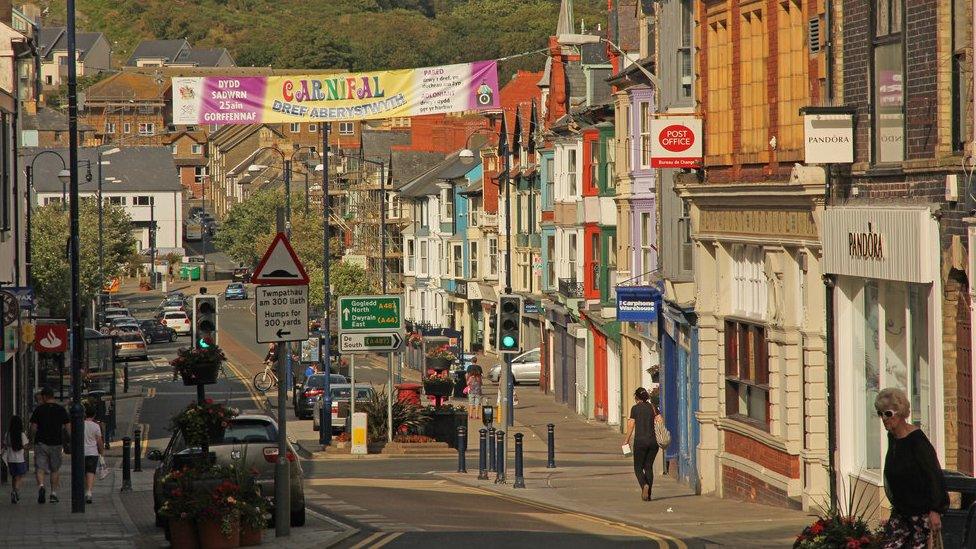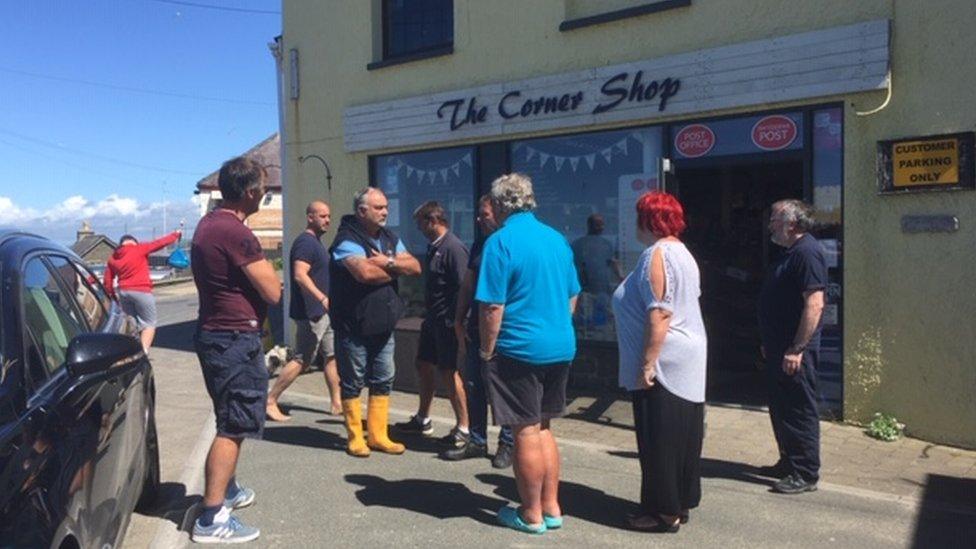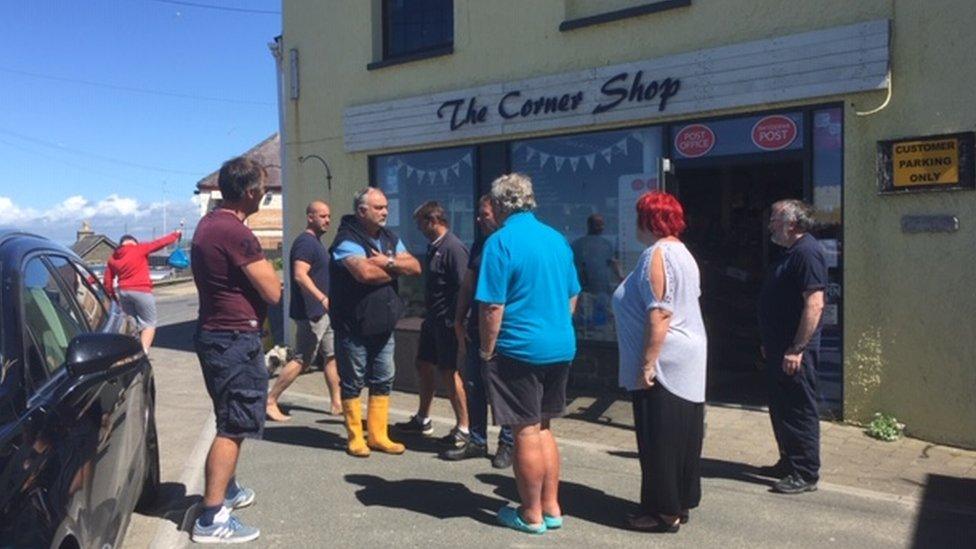Ceredigion: Parts of controversial Covid 'safe zones' to stay
- Published

Aberystwyth was one of the towns where roads were shut to allow more space for people to walk and dine out
Some Covid "safe zones" - introduced in one area of Wales to help keep people safe as businesses reopened after the first lockdown - could be set to stay.
Ceredigion council introduced the zones in four towns - Aberystwyth, Aberaeron, Cardigan and New Quay - in July 2020.
Aspects of the scheme, which saw major roads closed to allow more space for people to walk and dine outside, were criticised over a lack of consultation.
The council said elements which "helped the vitality of the town" could stay.
Council officer Russell Hughes-Pickering said further street closures were unlikely, according to the Local Democracy Reporting Service.

Although roads would fully reopen, the council says elements which "helped the vitality" of towns could stay
"I think we recognise that there are things that have worked and there are things that haven't," said Mr Hughes-Pickering.
A committee of councillors welcomed improvements to town layouts, but said members must be consulted amid concerns about traffic, disabled access and town centre residents.
At the time, some traders labelled the changes a "step too far".
The council said discussions with local members would take place later this month.
Aberystwyth councillor Ceredig Davies said road changes had sent vehicles through the "narrowest streets you can think of", adding some residents felt they lived in "lockdown zones".
Mr Davies questioned whether there was evidence the zones had prevented infections.

Traders in New Quay initially criticised Ceredigion council's plan for vehicle-free safe zones
Letting cafes and restaurants trade outside had been gratefully received, said Aberaeron councillor Elizabeth Evans.
But she was concerned some customers could not get to the shops because wider pavements meant fewer parking spaces, particularly for elderly and disabled people.
- Published10 July 2020

- Published14 August 2020

- Published5 September 2021
